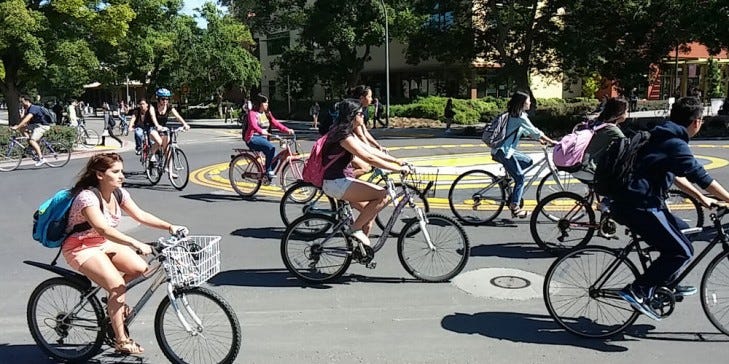2022 Pricing: Univ. of California - Davis
CTAS cost forecasts for UC Davis' 22/23 academic year and full 4-year program
CTAS is sharing its projections of 2022/23 academic year costs for individual colleges as a recurring feature. Similar information covering over 3,000 2- and 4-year schools is available at the CTAS site.
This post projects average net costs for the University of California-Davis, near Sacramento.
Across the UC system, admissions is roughly as competitive for California residents as it is for out-of-staters. UC Davis presents an exception, with much lower standards for out-of-state US first-year applicants (81% admissions in 2021) and international students (68%) than California first-year applicants (36%). Those admissions rates for non-residents have risen rapidly just since 2019, when the US out-of-state rate stood at 63%. This loosening is the driver of Davis’ rising overall admissions rate, up from 37% in 2017 to 49% in 2021 - in-state admissions standards are unchanged.
The high net cost for non-residents, the ease with which they can enroll and their small numbers on campus (~5% of US undergrads are from outside California) points to how UC Davis is in the early stages of embracing the mindset of other large public universities intent on attracting students from beyond its state borders. Instead, it continues to be inwardly oriented to serving state residents — which the school appears to do very well, based on its strong retention — similar to the UC system’s posture in the past.
But this posture is changing as California higher ed turns outwards. Though UC campuses continue to recruit below-average numbers of out-of-staters compared to “importers” like the flagships in Delaware or Alabama, they are enrolling materially more from outside California than a few years ago. Interestingly, this shift in focus is occurring as California high school classes continue to expand. The latest WICHE numbers show gradual rises in California high school enrollment climbing to a 2024 peak, after which the pool of students declines. So the UCs’ new outward focus is occurring against a backdrop of favorable home-state demographics.
These projections represent informational projections that will change over time and are not a commitment either by CTAS or the applicable colleges. Figures are rounded to the $500 avoid false specificity. Final net cost numbers will differ from these estimates for many reasons: changes to economic trends, decisions by the colleges both about their own policy and enrollment, as well as decisions about individual students. Estimates of full program costs assume graduation in 4-years (for Bachelor’s) or 2-years (Associate) without any gaps, delays or added semesters/quarters. We take pride in our numbers so, if you believe any should be corrected, please reach out to us at support@collegetuitionadvisoryservices.com and we will work with you to resolve the issue.
Average Net Cost is a consumer-centric metric which shows costs as they are presented in commercial transactions outside of higher education. It represents a full-time student’s cost of attending college including: tuition, room & board, fees and estimates of supplies less institutional aid of all kinds (including need-based and merit), and less federal and state/local aid. Loans and other repayable amounts, along with work study earnings, are excluded and do not reduce the cost. Room and board charges are on-campus costs for residential colleges; for students attending non-residential institutions, the college's own estimate of such off-campus costs is mostly used. CTAS' Net Cost differs from the Net Price figure self-reported by colleges because it is comprehensive and covers all entering students, including the approximately 40% not included in Net Price calculations.
Please find more information at the CTAS site. CTAS provides data, reports and personalized assistance with college pricing and aid appeals.



